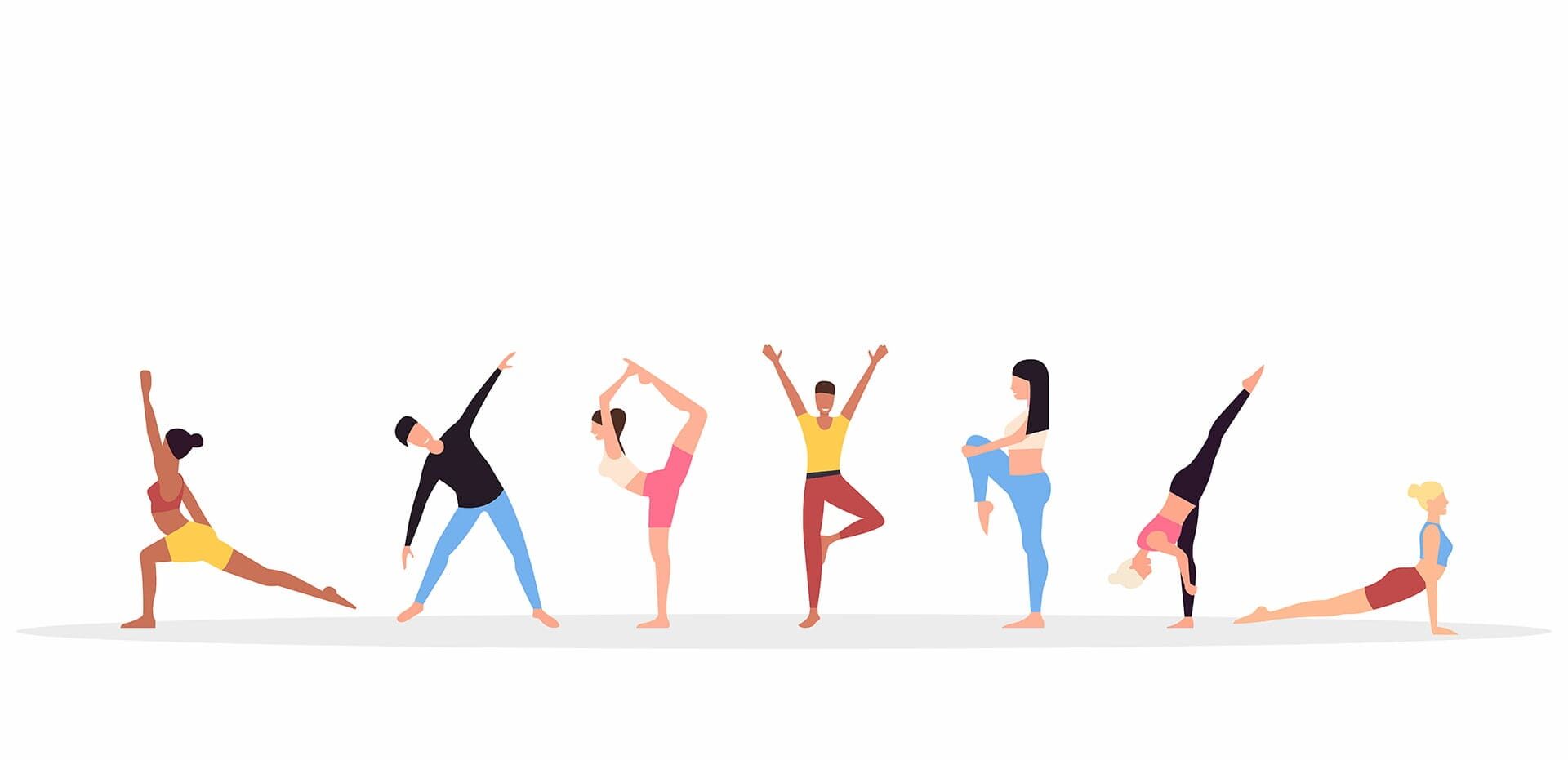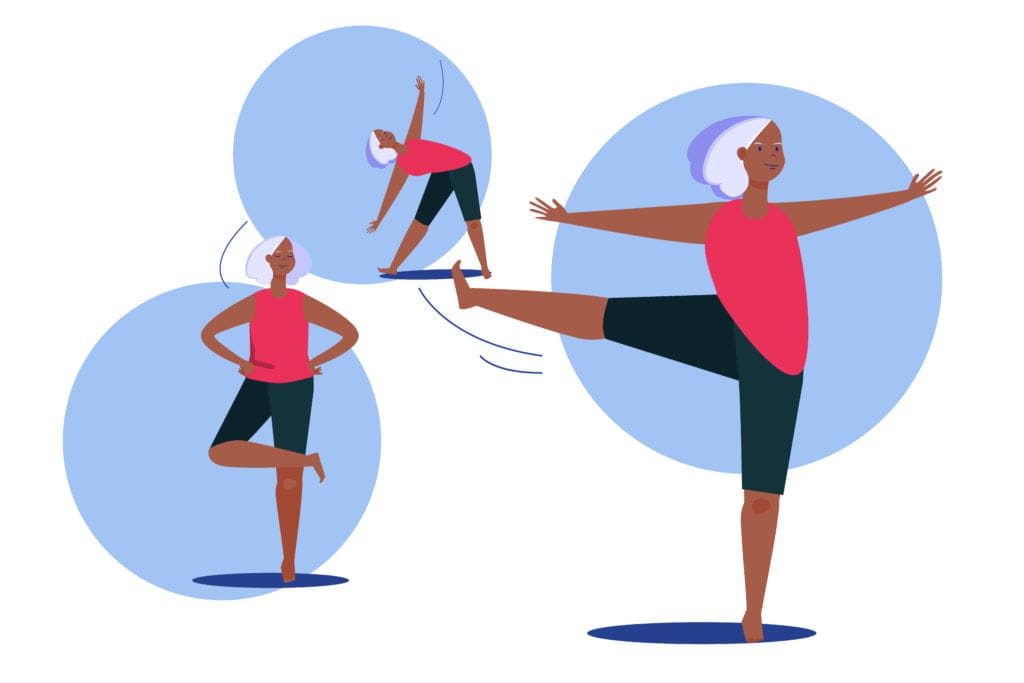 Introduction
Introduction
Hey there, fitness enthusiasts and soon-to-be wellness warriors! Holly Roser here, your friendly neighborhood personal trainer in San Mateo. We’ve all been there – starting a fitness journey with gusto, only to find our motivation fizzling out faster than a short-lived New Year’s resolution. But what if I told you there’s a way to turn those fleeting fitness goals into lasting habits that’ll have you feeling like a superhero in your own life story?
At Holly Roser Fitness, we’re all about helping you build a sustainable fitness lifestyle that doesn’t just transform your body, but revolutionizes your entire approach to well-being. So, buckle up, because we’re about to embark on a journey that’ll take you from short-term goals to long-term success, and trust me, it’s going to be one heck of a ride!
The Science of Habit Formation: Your Fitness Blueprint
Before we dive into the nitty-gritty of creating lasting fitness habits, let’s geek out for a moment on the science behind habit formation. Understanding this is like getting your hands on the cheat codes for your own brain – and who doesn’t want that?
The Habit Loop: Your Brain’s Fitness Autopilot
Ever wonder why some people seem to hit the gym as effortlessly as brushing their teeth? It’s all thanks to something called the habit loop. This nifty little cycle consists of three parts:
- Cue: The trigger that initiates the behavior
- Routine: The behavior itself
- Reward: The benefit you get from the behavior
For instance, your cue might be setting out your workout clothes the night before (hello, decision-free mornings!). The routine is your actual workout, and the reward? That sweet, sweet endorphin rush and the pride of checking “workout” off your to-do list.
A fascinating study published in the “European Journal of Social Psychology” sheds light on how long it actually takes to form a new habit. The researchers found that, on average, it takes about 66 days for a new behavior to become automatic. However, this can vary from 18 to 254 days, depending on the complexity of the habit and individual differences (Lally et al., 2010).
“Although the average time to reach automaticity was 66 days, there was considerable variation in how long habits took to form, anywhere from 18 days to 254 days in the habits examined in this study.”
So, if you’ve been beating yourself up for not turning into a fitness guru overnight, cut yourself some slack! Rome wasn’t built in a day, and neither is your fitness empire.
Setting SMART Goals: Your Fitness GPS
Now that we’ve got the science down, let’s talk about setting goals that’ll actually get you where you want to go. Enter SMART goals – your personal fitness GPS.
Breaking Down SMART Goals
- Specific: Instead of “get fit,” try “run a 5K in under 30 minutes”
- Measurable: How will you track progress? Time yourself, use a fitness app, or keep a workout journal
- Achievable: Challenge yourself, but be realistic. No zero to marathon in a week, okay?
- Relevant: Make sure your goal aligns with your overall fitness vision
- Time-bound: Set a deadline. It’s not procrastination if you plan for it, right?
Research supports the effectiveness of SMART goals in fitness. A study published in the “Journal of Sport and Exercise Psychology” found that individuals who set specific, challenging goals performed better than those who set vague or easy goals (Weinberg et al., 2020).
“The results indicate that goal setting is an effective method for enhancing performance in sport and exercise contexts, with specific and challenging goals leading to better outcomes than vague or easy goals.”
So, don’t be afraid to dream big and get specific with your fitness aspirations!
The Power of Micro-Habits: Small Steps, Giant Leaps
Alright, we’ve got our SMART goals set, but let’s be real – sometimes even those can feel overwhelming. That’s where micro-habits come in, your secret weapon for fitness success.
What Are Micro-Habits?
Micro-habits are tiny, almost ridiculously easy behaviors that, when stacked together, lead to significant changes. They’re the fitness equivalent of compound interest – small daily investments that yield big returns over time.
Here are some micro-habits to kickstart your fitness journey:
- Do 5 push-ups every time you go to the bathroom
- Take the stairs instead of the elevator for trips under 3 floors
- Drink a glass of water before each meal
- Stretch for 2 minutes while your coffee brews
These might seem too small to make a difference, but don’t underestimate the power of consistency. A study published in the “British Journal of General Practice” highlights the effectiveness of this approach, showing that small, incremental changes can lead to significant improvements in health behaviors (Gardner et al., 2019).
“Small changes approach can be an effective strategy for promoting healthy behaviors, particularly when these changes are implemented consistently over time.”
Overcoming Obstacles: Your Fitness Obstacle Course
Let’s face it – your fitness journey isn’t always going to be smooth sailing. There will be obstacles, setbacks, and days when your couch seems to have magnetic powers. But fear not! We’ve got strategies to help you hurdle over these fitness roadblocks like a pro.
The Habit of Consistency: Your Secret Weapon
Consistency is the unsung hero of fitness success. It’s not about being perfect; it’s about showing up, even when you don’t feel like it. Here’s how to build the habit of consistency:
- Start small: Commit to just 5 minutes of exercise daily. You’ll often find yourself doing more once you start.
- Use the “don’t break the chain” method: Mark each day you exercise on a calendar. Seeing that unbroken chain can be incredibly motivating.
- Embrace the “something is better than nothing” mindset: Can’t do your full workout? Do a quick set of squats or a short walk. It all counts!
Remember, consistency beats intensity every time. As the saying goes, “It’s not what we do once in a while that shapes our lives, but what we do consistently.”
Dealing with Setbacks: Your Comeback Strategy
Setbacks are not failures; they’re opportunities for growth. Here’s how to bounce back stronger:
- Practice self-compassion: Treat yourself with the same kindness you’d offer a friend.
- Analyze, don’t criticize: Look at what led to the setback and how you can prevent it in the future.
- Get back on track immediately: Don’t wait for Monday or next month. The best time to restart is now.
A study in the “International Journal of Behavioral Nutrition and Physical Activity” found that individuals who quickly resumed their exercise routines after a lapse were more likely to maintain long-term habits compared to those who allowed short breaks to extend (Kaushal et al., 2017).
“Prompt recovery from lapses in exercise behavior was associated with better long-term adherence to exercise routines.”
The Role of Environment: Designing Your Fitness-Friendly World
Your environment plays a crucial role in shaping your habits. By strategically designing your surroundings, you can make fitness the path of least resistance. Let’s explore how to create a world that nudges you towards your fitness goals.
Home Sweet (Fitness) Home
Transform your living space into a fitness haven with these tips:
- Visibility is key: Keep your workout gear in plain sight. A yoga mat by your bed or dumbbells near your TV can serve as visual reminders.
- Create a dedicated workout space: Even if it’s just a corner of your room, having a designated area for exercise can help you mentally switch into workout mode.
- Stock your kitchen with healthy options: Make nutritious choices easy by keeping fruits, vegetables, and lean proteins readily available.
Leveraging Technology: Your Digital Fitness Buddy
In our tech-savvy world, why not use gadgets and apps to your advantage? Here’s how:
- Fitness trackers: Use devices like Fitbit or Apple Watch to monitor your progress and stay motivated.
- Workout apps: Try apps like Nike Training Club or Strava for guided workouts and community support.
- Smart home devices: Set reminders on your Alexa or Google Home to prompt you for workouts or water breaks.
A study published in the “Journal of Medical Internet Research” found that the use of fitness apps was associated with increased physical activity levels and improved health outcomes (Hoj et al., 2021).
“Participants who used fitness apps reported higher levels of physical activity and greater improvements in health-related outcomes compared to non-users.”
The Power of Community: Your Fitness Tribe
Remember the old saying, “If you want to go fast, go alone. If you want to go far, go together”? Well, in the fitness world, we want you to go both fast AND far. That’s where your fitness community comes in.
Finding Your Fitness Squad
Building a supportive community can significantly boost your chances of sticking to your fitness goals. Here’s how to create your dream team:
- Join group fitness classes: Whether it’s yoga, HIIT, or spin, group classes are a great way to meet like-minded individuals.
- Find an accountability partner: Team up with a friend or family member who shares similar fitness goals.
- Engage in online fitness communities: Platforms like Strava, MyFitnessPal, or even fitness-focused Reddit communities can provide support and motivation.
Research backs up the power of social support in fitness. A study in the “Journal of Sport and Exercise Psychology” found that individuals who exercised with a partner or in a group setting reported higher levels of enjoyment and were more likely to adhere to their fitness routines (Puvirajah & Eys, 2020).
“Participants who exercised with others reported significantly higher levels of enjoyment and adherence to their fitness routines compared to those who exercised alone.”
Nutrition: Fueling Your Fitness Fire
You wouldn’t put low-grade fuel in a high-performance car, right? The same goes for your body. Let’s talk about how to fuel your fitness fire with proper nutrition.
The Basics of Balanced Eating
Creating a sustainable eating plan doesn’t have to be complicated. Here are some key principles:
- Focus on whole foods: Prioritize fruits, vegetables, lean proteins, whole grains, and healthy fats.
- Practice portion control: Use the hand method – a palm-sized portion of protein, a fist-sized portion of veggies, etc.
- Stay hydrated: Aim for at least 8 glasses of water a day. Your body will thank you!
- Plan your meals: Meal prep can be a game-changer for staying on track with your nutrition goals.
Remember, it’s about progress, not perfection. Aim for balanced meals 80% of the time, allowing yourself some flexibility for treats and special occasions.
Mindful Eating: Tuning Into Your Body’s Signals
Mindful eating is about being present and aware during meals. Here’s how to practice it:
- Eat slowly: Take time to chew your food and savor each bite.
- Listen to your body: Eat when you’re hungry, stop when you’re satisfied (not stuffed).
- Minimize distractions: Turn off the TV and put away your phone during meals.
A study in the “Journal of the Academy of Nutrition and Dietetics” found that mindful eating practices were associated with improved weight management and eating behaviors (Warren et al., 2017).
“Mindful eating interventions were shown to be effective in promoting weight loss and improving eating behaviors in adults.”
Recovery and Rest: The Unsung Heroes of Fitness
In our go-go-go world, it’s easy to forget that rest is just as important as the work you put in at the gym. Let’s explore why recovery is crucial for long-term fitness success.
The Science of Sleep and Fitness
Quality sleep is your body’s time to repair, recover, and grow. Here’s why it matters:
- Muscle recovery: During deep sleep, your body releases growth hormone, essential for muscle repair and growth.
- Performance enhancement: Adequate sleep improves reaction times, accuracy, and endurance.
- Weight management: Poor sleep can disrupt hormones that regulate hunger and fullness.
Aim for 7-9 hours of quality sleep per night. Create a sleep-friendly environment by keeping your bedroom cool, dark, and quiet.
Active Recovery: Moving Without Overdoing It
Rest doesn’t always mean being completely sedentary. Active recovery can help you bounce back faster:
- Light cardio: A leisurely bike ride or swim can improve blood flow without taxing your muscles.
- Yoga or stretching: Gentle movements can help alleviate muscle soreness and improve flexibility.
- Foam rolling: Self-myofascial release can help reduce muscle tension and improve mobility.
A study in the “Journal of Strength and Conditioning Research” found that active recovery methods were more effective in reducing muscle soreness and maintaining performance compared to passive rest (Dupuy et al., 2018).
“Active recovery techniques were found to be more effective in reducing delayed onset muscle soreness and maintaining subsequent performance compared to passive recovery methods.”
Adapting Your Fitness Journey: The Art of Flexibility
Life happens, and your fitness journey needs to be flexible enough to roll with the punches. Let’s explore how to adapt your routine without losing sight of your goals.
Seasonal Fitness: Embracing the Changing Tides
Just as nature has its seasons, so does your fitness journey. Here’s how to stay on track year-round:
- Spring: Focus on outdoor activities like hiking or cycling to enjoy the fresh air.
- Summer: Beat the heat with early morning workouts or water-based activities.
- Fall: Try new indoor classes or sports leagues as the weather cools.
- Winter: Embrace winter sports or cozy up with home workouts.
Remember, the key is consistency, not perfection. Adjust your routine to fit the season, and you’ll find it easier to stick to your goals.
Life Transitions: Navigating Fitness Through Change
Major life changes like a new job, moving, or starting a family can throw a wrench in your fitness routine. Here’s how to stay on track:
- Reassess your goals: Be realistic about what you can achieve in your new circumstances.
- Find new opportunities: A change in location might introduce you to new fitness options or outdoor spaces.
- Be kind to yourself: It’s okay if your routine looks different for a while. Focus on maintaining some level of activity.
A study in the “Journal of Physical Activity and Health” found that individuals who successfully maintained their exercise habits during major life transitions were more likely to have flexible mindsets and adaptive coping strategies (Sims-Gould et al., 2019).
“Participants who demonstrated flexibility in their exercise routines and employed adaptive coping strategies were more successful in maintaining physical activity levels during major life transitions.”
Measuring Progress: Beyond the Scale
While the number on the scale can be one indicator of progress, it’s far from the whole story. Let’s explore more comprehensive ways to track your fitness journey.
Non-Scale Victories: Celebrating the Little Wins
Progress comes in many forms. Here are some non-scale victories to celebrate:
- Improved energy levels: Notice how you feel more energized throughout the day.
- Better sleep quality: Track how your sleep improves as you get fitter.
- Increased strength: Celebrate when you can lift heavier weights or do more reps.
- Enhanced mood: Pay attention to improvements in your overall mood and stress levels.
- Clothing fit: Notice how your clothes fit differently as your body composition changes.
Tracking Tools: Your Fitness Dashboard
Utilize various tools to get a well-rounded view of your progress:
- Progress photos: Take monthly photos to visually track changes in your body composition.
- Fitness tests: Regularly perform tests like timed runs or max rep challenges to gauge improvement.
- Body measurements: Use a tape measure to track changes in key areas like waist, hips, and arms.
- Journaling: Keep a log of your workouts, energy levels, and overall well-being.
At Holly Roser Fitness, we believe in a holistic approach to tracking progress. Our trainers work with clients to set personalized benchmarks and celebrate all forms of improvement, big and small.
The Role of Professional Guidance: Your Fitness Co-Pilot
While embarking on a fitness journey solo can be rewarding, sometimes having a professional in your corner can make all the difference. Let’s explore the benefits of working with a personal trainer.
Why Consider a Personal Trainer?
A personal trainer can provide:
- Customized workout plans: Tailored to your specific goals, fitness level, and any physical limitations.
- Proper form and technique: Ensuring you perform exercises correctly to maximize results and prevent injury.
- Accountability: Regular check-ins and sessions to keep you on track.
- Motivation: A cheerleader and coach to push you when you need it most.
- Education: Learning about fitness principles to empower your long-term journey.
Research supports the effectiveness of personal training. A study in the “Journal of Sports Science & Medicine” found that individuals working with personal trainers showed greater improvements in strength and body composition compared to those training independently (Storer et al., 2014).
“Participants who worked with personal trainers demonstrated significantly greater improvements in muscular strength and body composition compared to those who trained without professional guidance.”
Conclusion: Your Fitness Odyssey Awaits
As we wrap up this guide, remember that your fitness journey is just that – a journey. It’s not about reaching a destination and stopping, but about creating a lifestyle that supports your health and well-being for the long haul.
From setting SMART goals and embracing micro-habits to designing a fitness-friendly environment and celebrating non-scale victories, you now have a toolkit to transform your short-term fitness aspirations into long-term success.
Remember, progress isn’t always linear. There will be ups and downs, setbacks and breakthroughs. But with consistency, patience, and the right mindset, you can achieve incredible things.
Whether you’re just starting out or you’re a seasoned fitness enthusiast looking to level up, know that you’ve got this. And if you ever need a helping hand or a motivational boost, the team at Holly Roser Fitness in San Mateo is here to support you every step of the way.
Your Next Step: Take Action!
Ready to kickstart your fitness journey or take it to the next level? Why not schedule a consultation with Holly Roser? She’ll help you craft a personalized plan that aligns with your goals, fits your lifestyle, and sets you up for long-term success.
Don’t wait for the “perfect” moment to start – that moment is now! Book your initial consultation today and let’s make your fitness dreams a reality!
Remember, in the world of fitness, the hardest rep is the one that gets you off the couch. So let’s get moving! Your future fit self is cheering you on!
References
Dupuy, O., Douzi, W., Theurot, D., Bosquet, L., & Dugué, B. (2018). An Evidence-Based Approach for Choosing Post-exercise Recovery Techniques to Reduce Markers of Muscle Damage, Soreness, Fatigue, and Inflammation: A Systematic Review With Meta-Analysis. Frontiers in Physiology, 9, 403.
Gardner, B., Lally, P., & Wardle, J. (2019). Making health habitual: the psychology of ‘habit-formation’ and general practice. British Journal of General Practice, 62(605), 664-666.
Hoj, T. H., Covey, E. L., Jones, A. C., Haines, A. C., Hall, P. C., Crookston, B. T., & West, J. H. (2021). How Do Apps Work? An Analysis of Physical Activity App Users’ Perceptions of Behavior Change Mechanisms. JMIR mHealth and uHealth, 9(2), e13679.
Kaushal, N., Rhodes, R. E., Spence, J. C., & Meldrum, J. T. (2017). Increasing Physical Activity Through Principles of Habit Formation in New Gym Members: a Randomized Controlled Trial. Annals of Behavioral Medicine, 51(4), 578-586.
Lally, P., van Jaarsveld, C. H., Potts, H. W., & Wardle, J. (2010). How are habits formed: Modelling habit formation in the real world. European Journal of Social Psychology, 40(6), 998-1009.
Puvirajah, A., & Eys, M. A. (2020). The Role of Social Support in Promoting Physical Activity and Well-Being in University Students: A Mixed-Methods Study. Journal of Sport and Exercise Psychology, 42(2), 140-151.
Sims-Gould, J., Vazirian, S., Li, N., Remick, R., & Khan, K. (2019). Older Adults’ Perspectives on Physical Activity and Exercise: A Photovoice Study. Journal of Physical Activity and Health, 16(7), 510-518.
Storer, T. W., Dolezal, B. A., Berenc, M. N., Timmins, J. E., & Cooper, C. B. (2014). Effect of supervised, periodized exercise training vs. self-directed training on lean body mass and other fitness variables in health club members. Journal of Strength and Conditioning Research, 28(7), 1995-2006.
Warren, J. M., Smith, N., & Ashwell, M. (2017). A structured literature review on the role of mindfulness, mindful eating and intuitive eating in changing eating behaviours: effectiveness and associated potential mechanisms. Nutrition Research Reviews, 30(2), 272-283.
Weinberg, R. S., & Gould, D. (2020). Foundations of Sport and Exercise Psychology (7th ed.). Human Kinetics.








